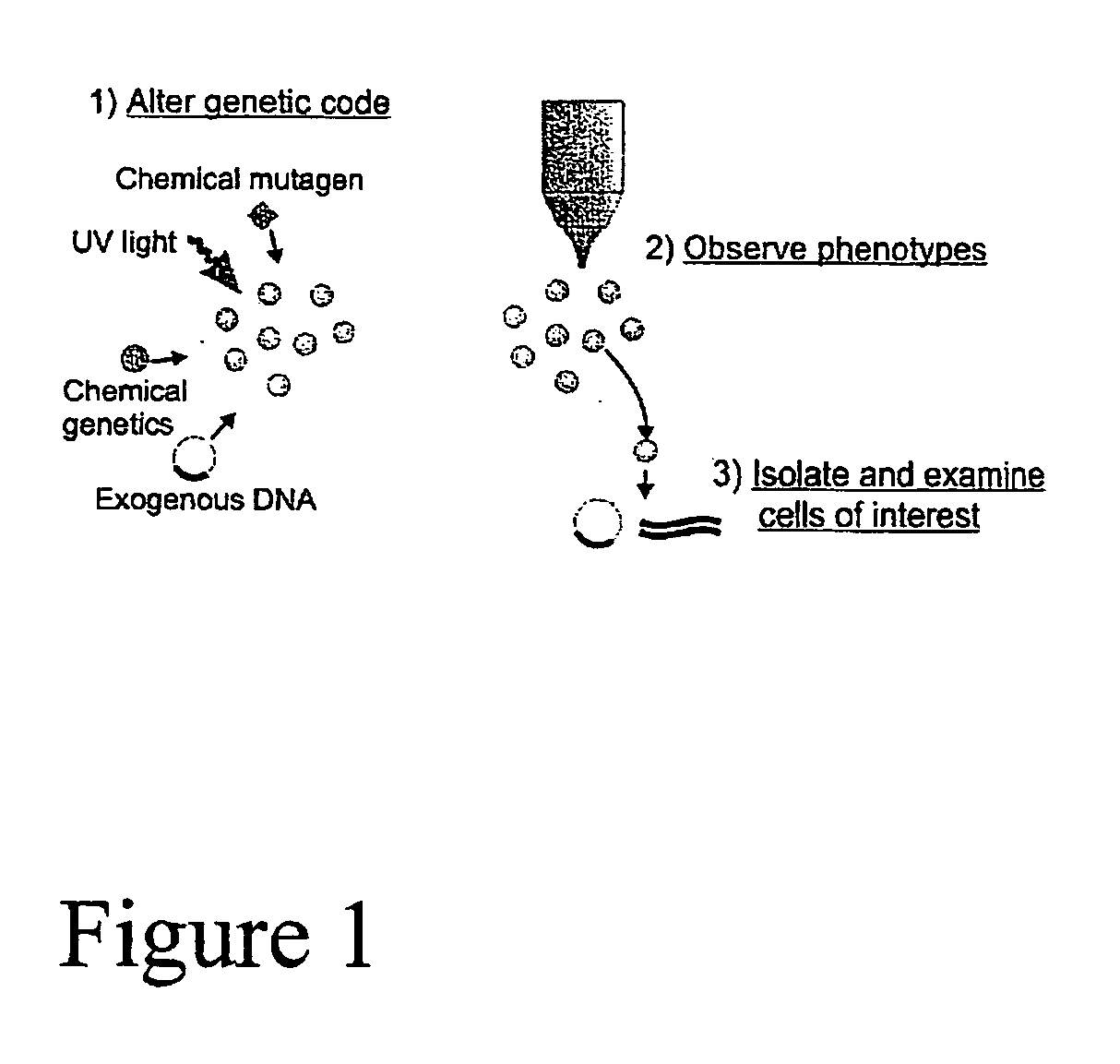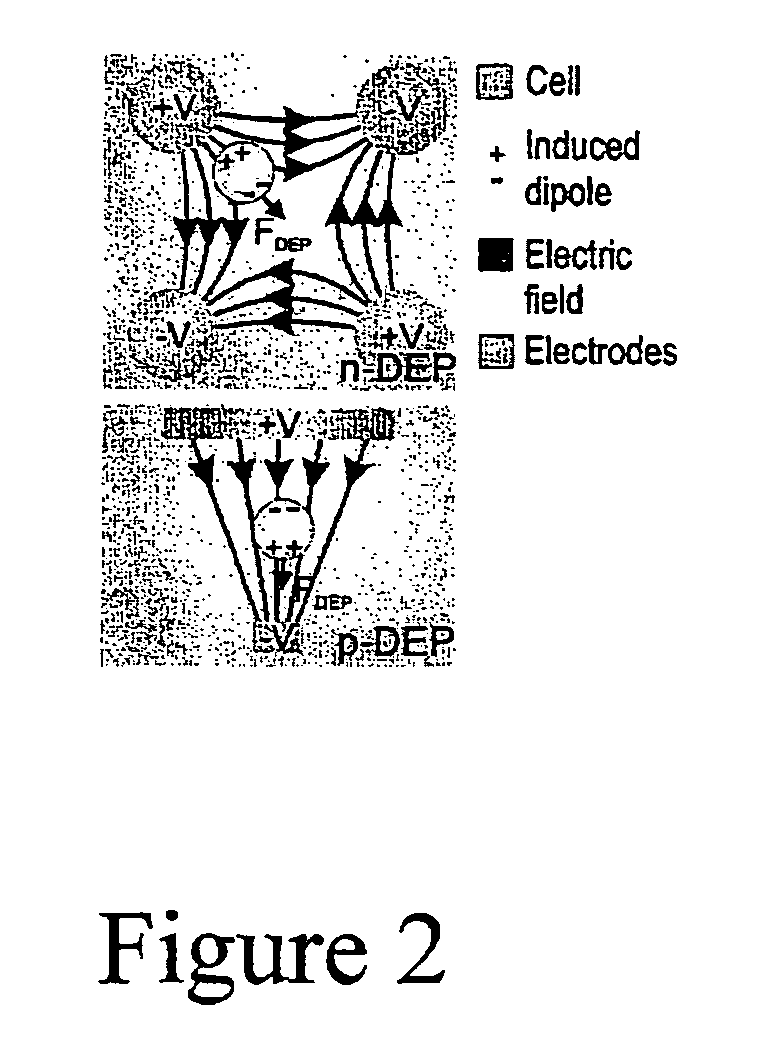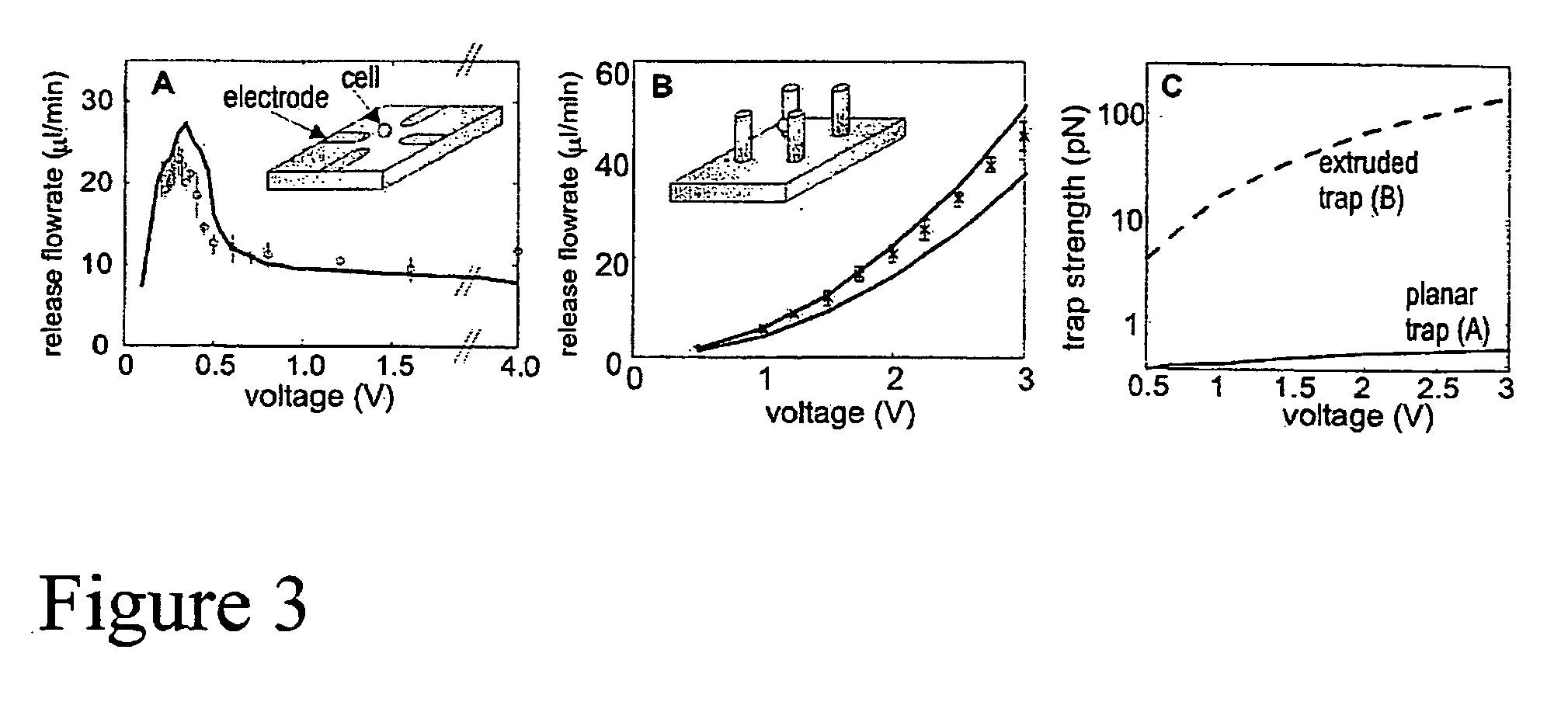Microscale sorting cytometer
a micro-scale, cytometer technology, applied in electrostatic separators, diaphragms, electrolysis, etc., can solve the problems of inability to sort subpopulations of observed cells based on morphological or intracellular information, lack of ability to observe cells microscopically and arbitrarily sort subpopulations of observed cells, and inability to understand cell function, etc., to achieve the effect of greater field strength
- Summary
- Abstract
- Description
- Claims
- Application Information
AI Technical Summary
Benefits of technology
Problems solved by technology
Method used
Image
Examples
example 1
DEP-Based Cellular Trap
[0117] In order to design a DEP trap that works well enough to be scaled to a large array, unique modeling software for quantitatively designing DEP traps was developed. This software allows one to simulate the performance of an arbitrary three-dimensional trap given the geometry, operating parameters (voltage, frequency, etc.), fluid flow (flow profile, flow rate, etc.), and cell parameters (radius, electrical characteristics). The software took numerically calculated electric fields (FEMlab by COMSOL, Inc.) and imported the data into Matlab. Then, using full dielectrophoretic theory, the multi-polar dielectrophoretic forces exerted on the cell everywhere in space was calculated, which, allowed for the accurate simulation of arbitrarily complex geometries. Other forces may also then be calculated, depending on the situation of interest: gravitational forces, hydrodynamic drag and lift forces, etc. Once all the forces were calculated, the program determined w...
example 2
Functional DEP-Based Sorting Cytometers
[0119] The traps designed in the modeling step of Example 1 were then constructed, and are shown in FIG. 4. These traps were designed for non-adherent mammalian cells (leukocytes). The traps were created on a glass (Pyrex) substrate, and consisted of electroplated gold post electrodes atop a 0.5 mm-thick Ti / Au interconnect layer. The traps were enclosed in a 150-mm high flow chamber with a polymer gasket (made of SU-8 photoresist) that was capped with a coverslip to allow high-fidelity optical access. With this array, capture, holding, and arbitrary sorting of individual HL-60 cells was accomplished. In addition, cultured HL-60 cells, were resuspended in PBS, trapped in the cytometer and then calcein was introduced into the chamber and the cytometer was imaged for 45 minutes, after which cells were sorted.
[0120] Traps that use DEP to independently pattern cells and extracellular matrix were developed as well. As shown in FIG. 5A, traps consis...
example 3
Scalable nDEP-Based Traps
[0121] The design of an n-DEP trap that would be easier to fabricate, amenable to use with adherent cells, robustly trap only single cells, and be able to be operated in a large array format was undertaken. In conjunction with the design, the modeling software was extended in order to predict temperature rises during trapping. FIG. 6 demonstrates another trap geometry, which meets these requirements.
[0122] The trap 28 consists of two electrodes (metal layers 1 (10) and 2 (12)) surrounding a well 14. When energized, the electrodes create a DEP barrier that keeps trapped cells within the trap and untrapped cells out of the trap, thus ensuring robust single-cell trapping. The trap spacing is 59 mm with a 30 mm-wide well, appropriately sized to hold single NIH 3T3 fibroblasts.
[0123] Assembling a cytometer based on such a trap may be as depicted in FIG. 7. Loading of the cells occurs passively, while engagement of the traps via application of voltage, concurre...
PUM
| Property | Measurement | Unit |
|---|---|---|
| Electric potential / voltage | aaaaa | aaaaa |
| Electric potential / voltage | aaaaa | aaaaa |
| Electric field strength | aaaaa | aaaaa |
Abstract
Description
Claims
Application Information
 Login to View More
Login to View More - R&D
- Intellectual Property
- Life Sciences
- Materials
- Tech Scout
- Unparalleled Data Quality
- Higher Quality Content
- 60% Fewer Hallucinations
Browse by: Latest US Patents, China's latest patents, Technical Efficacy Thesaurus, Application Domain, Technology Topic, Popular Technical Reports.
© 2025 PatSnap. All rights reserved.Legal|Privacy policy|Modern Slavery Act Transparency Statement|Sitemap|About US| Contact US: help@patsnap.com



